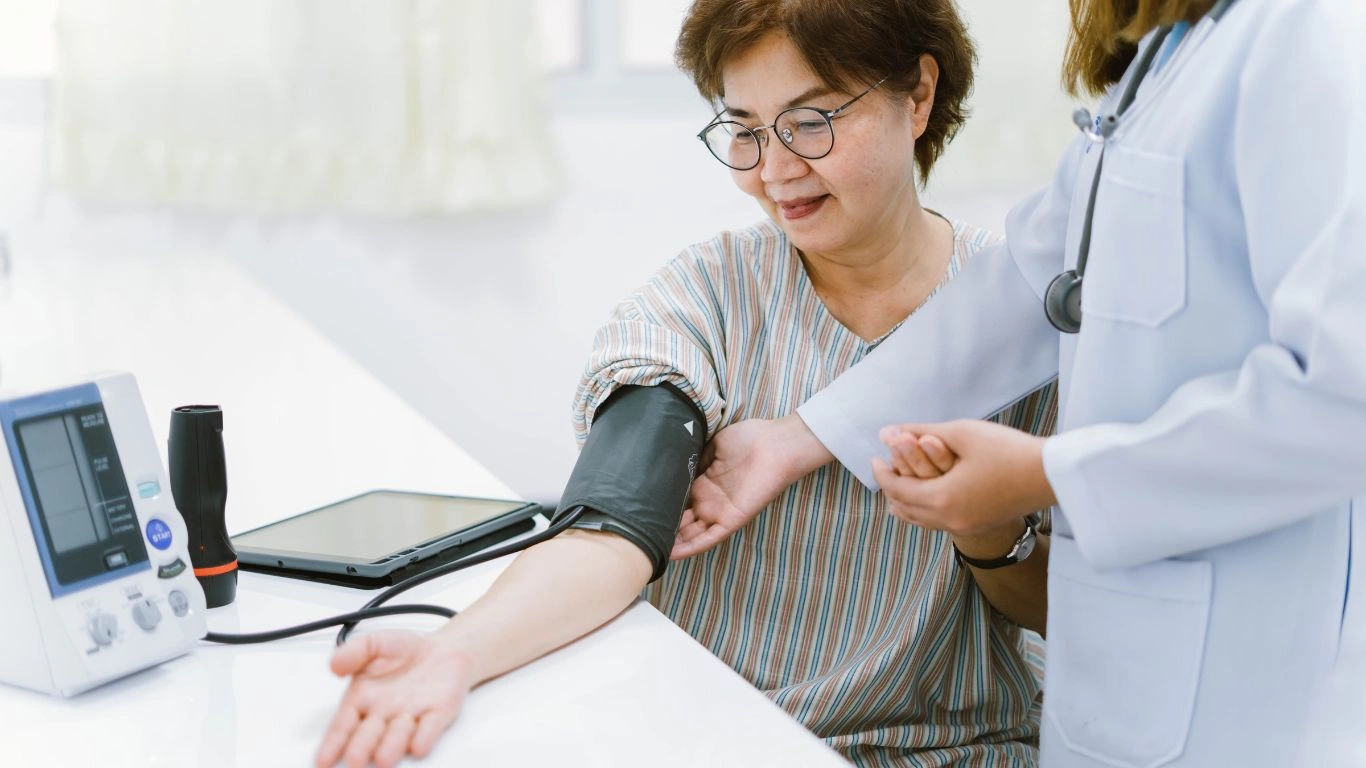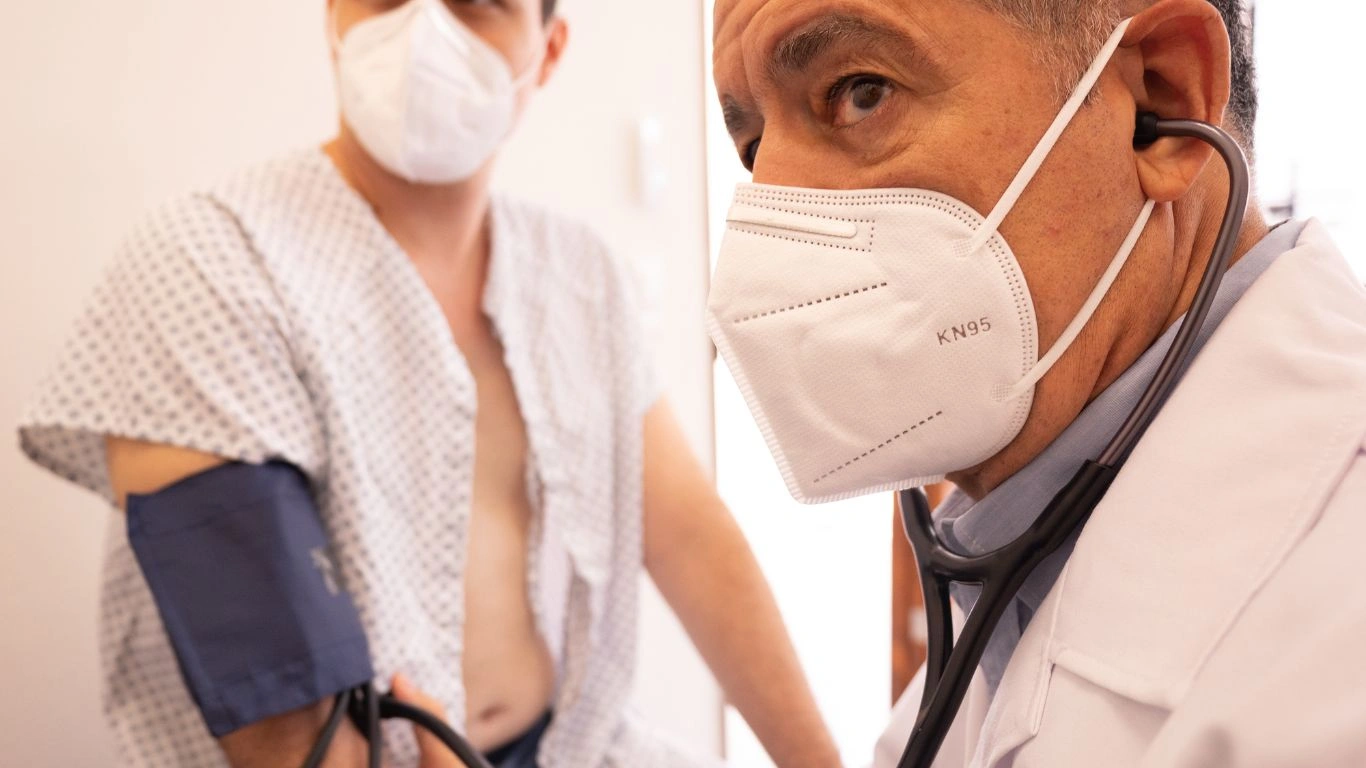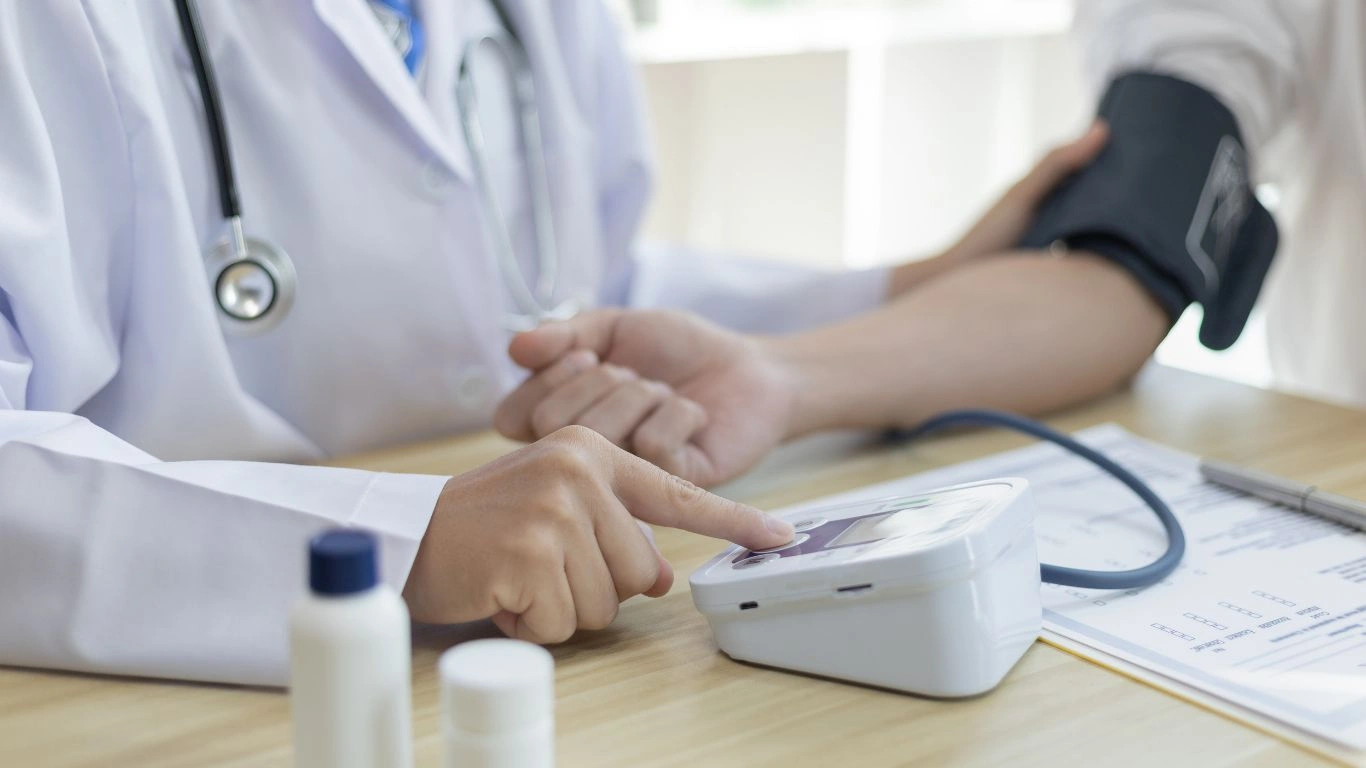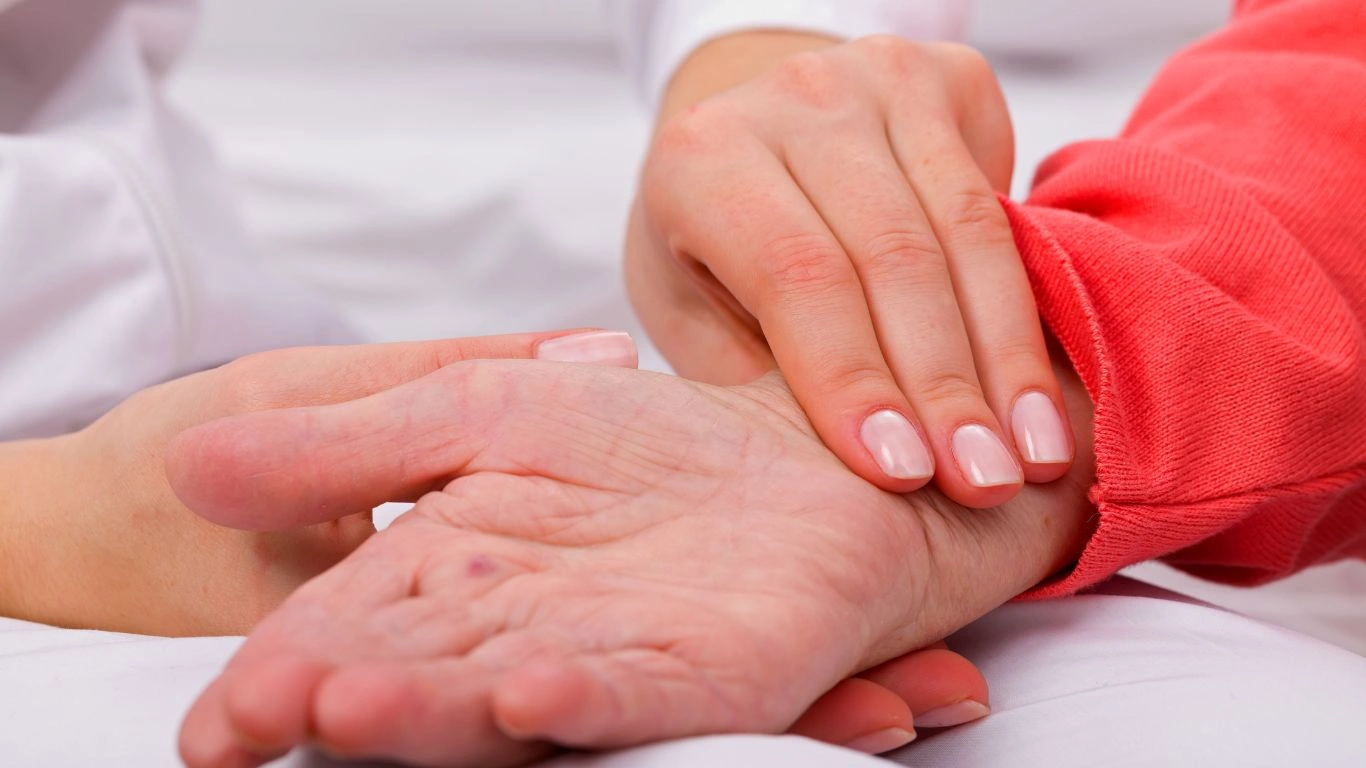Best Foods to Lower Blood Pressure & Boost Heart Health Naturally
If you’ve ever been told to “watch your blood pressure,” you’re not alone. High blood pressure (hypertension) is a sneaky culprit behind heart disease, stroke, and a laundry list of other health problems. But here’s the good news—what you put on your plate has a massive impact on your heart health. The right foods can help lower blood pressure naturally, support your cardiovascular system, and even improve overall well-being. Trust me, I’ve spent years as a hypertension expert, and I’ve seen firsthand how small diet changes make a world of difference. So, let’s talk about foods that improve heart health and lower blood pressure—because your heart deserves the best.
Why Food Matters for Heart Health

Your diet isn’t just about keeping your waistline in check—it’s the foundation of your heart’s well-being. When you eat the right foods, you help:
- Reduce blood pressure by balancing sodium and potassium levels.
- Improve circulation and keep arteries flexible.
- Lower bad cholesterol (LDL) while boosting good cholesterol (HDL).
- Fight inflammation, a major culprit in heart disease.
As someone who has worked closely with patients battling hypertension, I can tell you firsthand—food choices matter more than most people realize. But you don’t have to overhaul your diet overnight. Instead, start by adding more of the right foods to your plate.
The Best Foods That Improve Heart Health and Lower Blood Pressure

So, what should you be eating more of? Let’s break it down.
1. Leafy Greens: Nature’s Blood Pressure Balancer
Spinach, kale, Swiss chard—these vibrant greens are loaded with potassium, a key mineral that helps flush out excess sodium from the body. When you lower sodium levels, you lower blood pressure. It’s that simple.
- Try this: Toss some spinach into your morning smoothie, or sauté kale with garlic and olive oil for a heart-friendly side dish.
2. Berries: Tiny but Powerful
Blueberries, strawberries, and raspberries are packed with antioxidants called flavonoids, which research shows can help lower blood pressure naturally. Plus, they’re delicious and easy to add to any meal.
- My favorite tip: Mix a handful of berries into Greek yogurt for a heart-healthy snack.
3. Fatty Fish: The Omega-3 Superstar
Salmon, mackerel, and sardines are rich in omega-3 fatty acids, which reduce inflammation and improve blood vessel function. Eating these at least twice a week can help keep your heart strong.
- Quick meal idea: Grilled salmon with a side of roasted veggies and quinoa is a perfect dinner for heart health.
4. Beets: The Nitric Oxide Boost
Beets are one of my go-to recommendations for patients struggling with high blood pressure. They’re rich in nitrates, which help relax blood vessels and improve circulation.
- How to enjoy them: Blend beets into a smoothie or roast them for a sweet, earthy side dish.
5. Nuts and Seeds: A Crunchy Heart Saver
Almonds, walnuts, flaxseeds, and chia seeds are packed with heart-healthy fats, fiber, and magnesium—nutrients that help regulate blood pressure and cholesterol.
- Easy swap: Snack on a handful of almonds instead of chips or sprinkle flaxseeds over oatmeal.
The Bottom Line: Small Changes, Big Impact

One of the biggest myths I hear is that eating for heart health means bland, boring food. But that couldn’t be further from the truth! The right foods aren’t just good for your heart—they taste amazing, too. By incorporating more leafy greens, berries, fatty fish, beets, and nuts into your diet, you’re giving your heart exactly what it needs to thrive.
But wait—there’s more! These foods are just the beginning. There are even more powerful heart-healthy options that can help lower blood pressure naturally. Stay with me as we dive deeper into this topic.
Now that we’ve covered some of the best foods for heart health and lowering blood pressure, let’s keep going. There are even more incredible foods that can support your cardiovascular system and help keep hypertension in check. As someone who has worked with countless patients over the years, I’ve seen firsthand how small diet tweaks can lead to significant improvements. So, let’s dive into more heart-healthy superfoods you should be adding to your plate.
More Foods That Improve Heart Health and Lower Blood Pressure

6. Avocados: The Healthy Fat Hero
Avocados aren’t just trendy—they’re a powerhouse for heart health. Packed with potassium and monounsaturated fats, they help lower bad cholesterol and regulate blood pressure. Plus, they make everything taste better!
- Easy way to eat them: Spread avocado on whole-grain toast, blend it into a smoothie, or toss it into a salad.
7. Dark Chocolate: Yes, You Read That Right!
Surprised? Dark chocolate (at least 70% cocoa) is rich in flavonoids, which help improve blood flow and reduce blood pressure. But moderation is key—stick to a small piece a day to get the benefits without overloading on sugar.
- My pro tip: Have a square of dark chocolate after dinner for a heart-healthy treat.
8. Oats: The Fiber-Filled Powerhouse
Oats are an excellent source of beta-glucan, a type of fiber that helps reduce cholesterol levels and stabilize blood pressure. I always recommend starting the day with a bowl of oats—it’s one of the easiest ways to support your heart.
- Delicious idea: Make overnight oats with chia seeds, berries, and a drizzle of honey.
9. Garlic: Nature’s Blood Pressure Medicine
Garlic has been used for centuries as a natural remedy for heart health. It contains allicin, a compound that helps widen blood vessels and reduce blood pressure levels.
- How to use it: Add fresh garlic to homemade dressings, soups, or roasted vegetables.
10. Olive Oil: The Mediterranean Secret
Olive oil is a staple of the heart-healthy Mediterranean diet. It’s packed with antioxidants and monounsaturated fats that help lower inflammation and improve cholesterol levels.
- Simple swap: Use extra virgin olive oil instead of butter or margarine when cooking.
Hydration Matters: Drinks That Support Heart Health

It’s not just about what you eat—what you drink plays a huge role in heart health, too. Many people don’t realize that some beverages can help lower blood pressure naturally.
1. Green Tea: The Antioxidant Giant
Green tea is loaded with catechins, antioxidants that help improve blood vessel function and reduce blood pressure.
- Best way to enjoy: Swap your morning coffee for a cup of green tea or sip it in the afternoon for a heart-healthy boost.
2. Hibiscus Tea: Nature’s Blood Pressure Lowering Drink
Hibiscus tea is a natural diuretic, helping to flush out excess sodium and reduce blood pressure levels. Several studies have shown that drinking hibiscus tea regularly can have a noticeable impact on hypertension.
- Try this: Brew hibiscus tea, chill it, and add a squeeze of lemon for a refreshing drink.
3. Beet Juice: A Natural Nitrate Booster
We talked about beets earlier, but did you know beet juice is one of the fastest ways to lower blood pressure? Thanks to its high nitrate content, it helps dilate blood vessels and improve circulation.
- Quick tip: Drink a small glass of beet juice before a workout for an energy and heart health boost.
4. Water: The Ultimate Heart Helper
It sounds simple, but staying hydrated is one of the best things you can do for your heart. Dehydration makes the heart work harder, leading to increased blood pressure.
- Pro tip: Keep a water bottle with you at all times and aim for at least 8 glasses a day.
Making It a Lifestyle, Not a Diet
One of the biggest things I tell my patients is that improving heart health isn’t about following a strict “diet.” It’s about making small, sustainable changes that fit into your lifestyle. The key is to add more of these heart-healthy foods and drinks into your daily routine without feeling like you’re restricting yourself.
Start with one or two swaps—maybe replace butter with olive oil or grab a handful of nuts instead of chips. Over time, these small choices add up to big results. And trust me, your heart will thank you!
But we’re not done yet—there are still a few more essential heart-healthy foods and strategies I want to share with you. Keep going because the best is yet to come!
By now, you have a solid understanding of the best foods and drinks that support heart health and lower blood pressure. But let’s take it a step further. How do these dietary changes actually play out in real life? And what are the most important takeaways from everything we’ve covered? Let’s wrap this up with some real-world examples, practical tips, and key insights to make it easier for you to start implementing these changes today.
Case Studies & Real-Life Examples

Over the years, I’ve worked with countless patients who have successfully managed their blood pressure and improved their heart health by making simple dietary shifts. Here are a few real-life cases that showcase just how powerful food can be:
Case Study #1: John, 52 – From Hypertension to Healthy
John had been struggling with high blood pressure for years. Despite medication, his readings remained high. He felt exhausted, and his doctor warned him that his lifestyle needed a major overhaul.
Instead of trying a drastic diet, we made small, sustainable changes:
- Swapped processed snacks for nuts and seeds.
- Incorporated more leafy greens and beets into his meals.
- Started drinking hibiscus tea instead of soda.
- Cut down on salt and used garlic and herbs for flavor.
Within three months, John’s blood pressure dropped significantly. His energy levels improved, and he felt healthier than he had in years.
Case Study #2: Maria, 45 – Beating Hypertension with the Mediterranean Diet
Maria, a busy working mom, found it difficult to cook healthy meals. Her diet was high in processed foods, and she often relied on takeout. As a result, her blood pressure was creeping higher every year.
Instead of putting her on a strict diet, I encouraged her to follow a Mediterranean-style eating pattern. She made a few key changes:
- Used extra virgin olive oil instead of butter.
- Added more fatty fish like salmon and sardines.
- Replaced white bread and pasta with whole grains.
- Enjoyed fresh fruit and dark chocolate as desserts.
After six months, Maria’s blood pressure normalized, and she lost 10 pounds in the process. The best part? She never felt deprived.
Key Takeaways: What You Need to Remember
Let’s summarize the most important points from this article so you can start making heart-healthy changes today:
- Leafy greens, berries, and fatty fish are some of the best foods for heart health.
- Avocados, garlic, nuts, and olive oil help lower blood pressure naturally.
- Hydration matters—green tea, hibiscus tea, and beet juice can improve circulation.
- Small swaps—like replacing processed foods with whole, natural options—can make a huge difference.
- Consistency is key. You don’t need to be perfect, but you do need to be consistent.
FAQs
Q: How quickly can diet changes lower blood pressure?
A: It depends on the individual, but many people see improvements within a few weeks. The key is consistency.
Q: Do I have to cut out salt completely?
A: No, but reducing sodium intake is important. Focus on natural flavor enhancers like garlic, lemon, and herbs instead.
Q: Are supplements necessary for heart health?
A: Whole foods should always come first, but in some cases, supplements like omega-3s or magnesium may be beneficial. Talk to a healthcare provider before adding any supplements.
Q: Can I still eat my favorite foods?
A: Absolutely! The goal is balance, not perfection. You can enjoy treats in moderation while prioritizing heart-healthy choices.
Bonus: Additional Resources & DIY Tips
Looking for more ways to support your heart? Here are a few additional tips:
- Meal prep ahead of time: Prepare heart-healthy meals in batches to make it easier to stick to your goals.
- Stay active: Pairing a healthy diet with regular movement amplifies the benefits.
- Get quality sleep: Poor sleep is linked to higher blood pressure—aim for 7-9 hours per night.
- Manage stress: Chronic stress can raise blood pressure. Try deep breathing, meditation, or yoga.
Appendix: References, Disclaimer, & Call to Action
References
For more information, check out these trusted sources:
- American Heart Association
- National Heart, Lung, and Blood Institute
- National Center for Biotechnology Information (NCBI)
Disclaimer
The information provided in this article is for educational purposes only and should not replace professional medical advice. Always consult with a healthcare provider before making significant changes to your diet or lifestyle.
Call to Action
Now that you have the knowledge, it’s time to take action! Start by making one small change today—whether it’s swapping out processed foods, drinking more water, or adding leafy greens to your meals. Your heart will thank you!
If you found this article helpful, share it with someone who could benefit from it. Let’s spread the word about heart-healthy living!

Dr. Gwenna Aazee is a board-certified Internal Medicine Physician with a special focus on hypertension management, chronic disease prevention, and patient education. With years of experience in both clinical practice and medical writing, she’s passionate about turning evidence-based medicine into accessible, actionable advice. Through her work at Healthusias.com, Dr. Aazee empowers readers to take charge of their health with confidence and clarity. Off the clock, she enjoys deep dives into nutrition research, long walks with her rescue pup, and simplifying medical jargon one article at a time.






